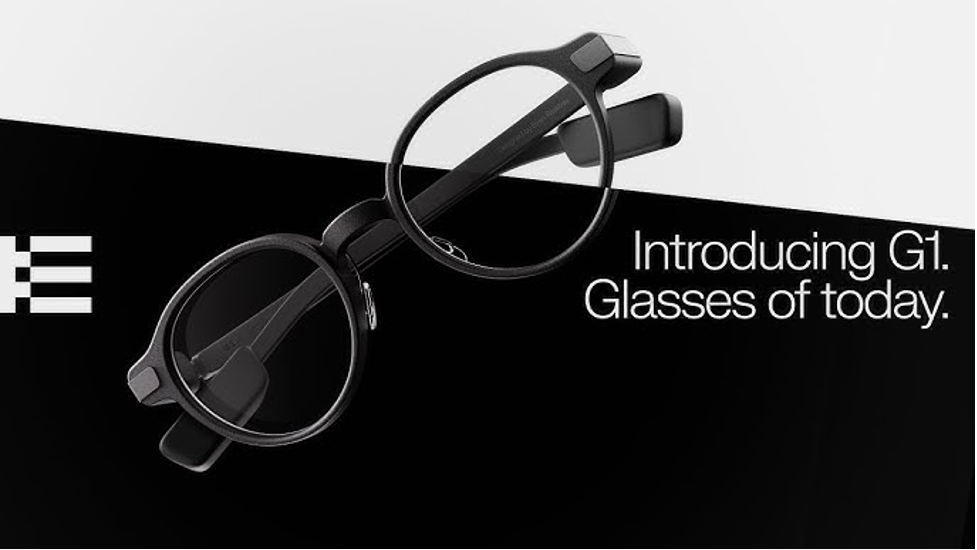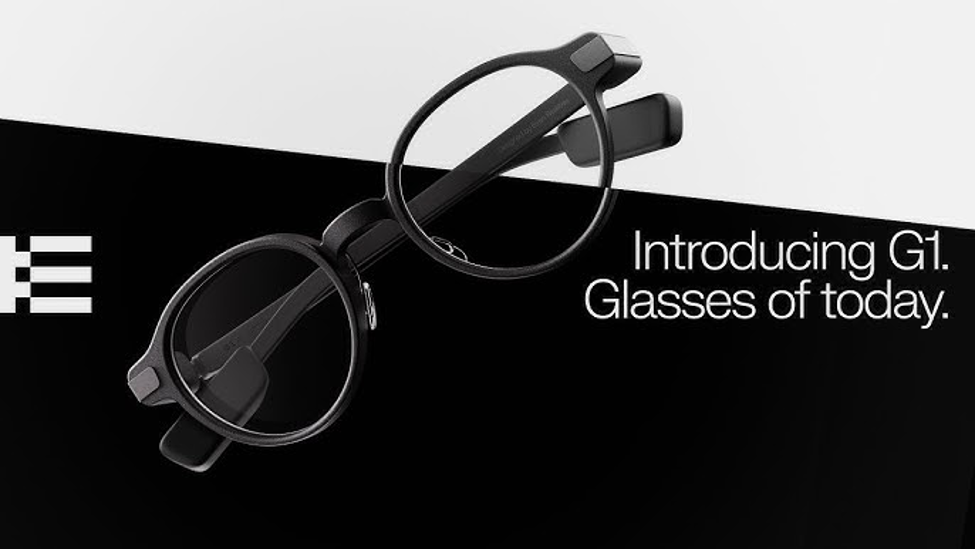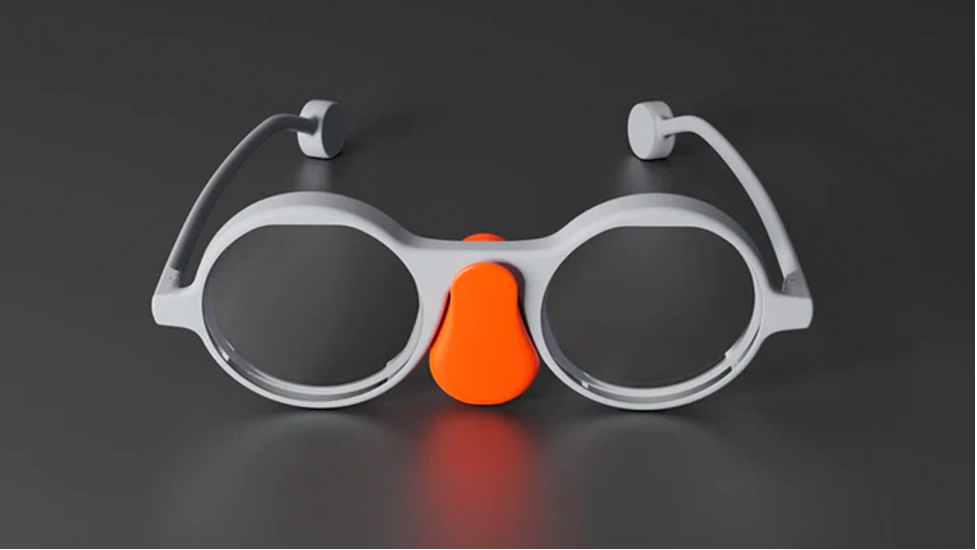AI glasses exploration is in full swing. Apart from the well-known Ray-Ban Meta, several new AI glasses models are about to hit the market, some featuring optical displays while others integrate the latest multimodal AI model, GPT-4o.
Even Realities G1 A: The Aesthetics of Restrained AR Glasses
Even Realities launched its first AR glasses product, G1 A, in June this year. The product is currently in the pre-sale stage, targeting overseas markets, with a starting price of $599 in the United States. It is expected to ship in August this year.

From the product images, it is evident that the G1 A emphasizes design and wearability. Unlike the relatively “bulky” AR glasses of recent years, the G1 A is notably more fashionable in appearance. The G1 A is compact, with the frame and temple parts almost indistinguishable from regular glasses. Its optical engine is cleverly hidden in the hinge area, while the battery and processing unit are placed at the end of the temples. Notably, Even Realities’ chief glasses designer, Philipp Haffmans, is also the founder of the eyewear brand Haffmans & Neumeister, with years of experience in the eyewear industry.
In terms of optics, the G1 A is equipped with a dual-mono green Micro-LED + diffraction waveguide solution (similar to Meizu’s MYVU), with a resolution of 640×200, a field of view (FoV) of 25°, a refresh rate of 20Hz, and a peak brightness of up to 1000 nits. For nearsighted users, the G1 A supports custom lenses that can be bonded with waveguide and refractive lenses using an adhesive. Compared to other common clip-on and embedded solutions, it offers stronger integration and higher completeness. The official website claims that the combined thickness of the lenses is similar to that of regular prescription lenses, can withstand a 2-meter drop test, and has a light transmittance of up to 98%.
Solos AirGo Vision: Small Iterative Model, Supporting Multimodal AI
Solos, a smart glasses company incubated by the overseas VR/AR micro-display technology developer Kopin, previously launched several smart glasses products, including the AirGo 2 and AirGo 3. These products can be categorized into regular smart glasses, sunglasses, and sports glasses, with prices ranging from $199 to $299 on the Solos website.

The AirGo Vision is Solos’ first smart glasses equipped with a camera module. It debuted at the Hong Kong Smart Glasses Summit this month and is expected to be released by the end of the year, with pricing yet to be determined. The highlight of the AirGo Vision is undoubtedly its adaptation to the multimodal AI GPT-4o. Released in May this year, GPT-4o impressed with its coherence in communication, speed of voice response, and visual understanding capabilities. Many had anticipated GPT-4o’s integration with Apple’s Siri, but Solos has taken the lead. In addition to GPT-4o, Solos claims that the product will also support Google Gemini and Claude AI.
Frame AI Glasses: The Open Source Player in AI Glasses
Last March, AR hardware startup Brilliant Labs launched its first AR glasses accessory, Monocle, which can be attached to regular glasses. At the time, it garnered widespread attention as the “first AR glasses integrated with ChatGPT.”

In February this year, Brilliant Labs introduced a truly standalone AR glasses product, Frame, starting at $349. Due to high demand, current orders require more than a month for delivery. The Frame features single-eye Micro-OLED + geometric prism optics (right eye) with a resolution of 640×400, a peak brightness of approximately 750 nits, and a FoV of about 20°.
The center of the glasses houses a 1-megapixel camera and a metal contact for charging (the charging adapter is shown in the image, with the charging position similar to the Ray-Ban Meta). The glasses have a battery capacity of 222mAh, while the orange charging adapter additionally provides 149mAh.
Functionally, Frame is almost entirely focused on AI. It includes the AI assistant Noa, integrated with GPT-4, Stability AI, and Whisper AI models, capable of performing visual processing, image generation, and real-time speech recognition and translation. According to the official website, Noa can learn and adapt to users and their tasks, becoming increasingly personalized.
Unlike other AR glasses, Frame’s hardware schematics and code library documentation are open source, allowing developers to further modify the software and hardware, and even adjust AI model parameters.

